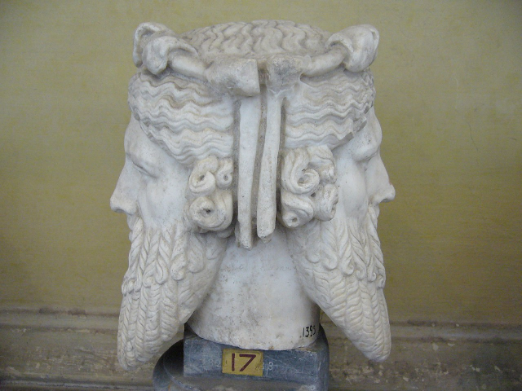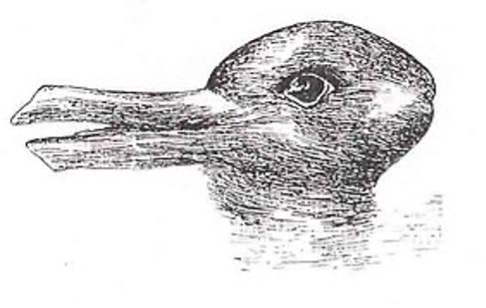
How do we deal with ambiguity? The reason I ask that is because it seems to be the key to a correct understanding of Jesus Christ in Mark’s Gospel.
How can he be both God and man? Or to quote the passage, how can he perform supernatural healings and miracles, and indeed show supernatural wisdom in his teaching, when his background seems just as ordinary as ours?
And the answer to that is a bit complex, so bear with me please: it lies in the very nature of reality, and how we perceive it, and how we sometimes fail to perceive it. And that is not a neutral, objective matter. For we all use our own filters and prejudices of many different kinds when we try and understand what is in front of our very eyes. Reality, in all its complexity, is sensed and experienced. Or eyes are very much a starting point only, to what we really see, or fail to see. A good deal of mental mapping goes on once we see an image – or a person – what psychologists call mid-level vision – in order for us to make sense of what we see, and come to conclusions.
Jesus presents such an ambiguous image. To conclude He and God the Father are one is going to take some considerable mental processing for the First Century Jewish mind.
But before we criticise Jesus home town too much, let us consider how we ourselves process ambiguity:
Let’s take this famous image:

Most people can easily resolve the difficulty here: is it a duck or a rabbit? It is both, and easy to distinguish once we see which way the animal is facing – left or right. No baggage, filtering or prejudice required. Unless you count reading from left to right. In which case, you probably saw the rabbit first
More problematic is this famous image:

Here, I hold my hand up! I, personally, saw the beautiful young woman with the elegant features looking away from us, to the behind / left of the picture. I did not see the – frankly – rather ugly old crone, with the bags under her eyes, and the large hooked nose, and the sagging, sharp chin, looking to the bottom left of the foreground. In fact, it took me quite a few goes to see it, even when explained to me!
Just a spatial trick? Or is there something deeper going on – our desire to see beauty and youth, and block the equal reality of old age, and its distortions of youth and beauty?
Just a mental trick? Let’s look again at the passage. One moment the home crowd cannot deny Jesus mighty wisdom and power, his miracles done in front of their eyes – His obvious claims to be the Son of God, the Messiah. On the other hand, this so little fits in with their image of what the Messiah should be, they are immediately prejudiced by knowing his humble and non-scholarly family background, and lack of social and religious credentials.
But why take offence?
Perhaps because there is nowhere else to go. The alternative is to declare Him Messiah, and Son of God, and somehow, that seems impossible.
The image is too ambiguous to see what they don’t wish to see. They only half see it. And of course, when it comes to faith, half is no good at all.
In the words on one Bible commentator:
“They are half inclined to marvel and believe, but this very half-belief makes them the more irritated and incredulous. His teaching seemed very wise; but yet how could this man, whose family they know so well – just ordinary people – can say such wise things? He was no rabbi by profession. It is impossible. This seems true to human nature. They do not want to believe. If Jesus was a veritable prophet, it would be annoying. “We are as good as he, but we could not teach as he does, and we could not do the wonders he is said to have done. Therefore, after all, his teaching is not wise, and he did not do the wonders.”
Before we criticise the petulant, and almost childish, non-faith illogic of this position, we would do well to admit that we all do this from time to time.
Put more simply, the truth lies before us, but we do not wish to see it, and so improbable alternative explanations must be found to support our established world view – rather than risk changing it.
But help is at hand. We pray for the eyes of faith to see Jesus as He is, for who He is. And we equally pray to see each other, as precious members of the family of God, laying aside those points of difference which, alas, cling to us so closely: race, class, culture, background, and perhaps, too much willingness to protect our own precarious self-confidence, and abilities and positions.
May we pray to God to give us instead eyes that see; eyes that accept what we can know through faith; eyes of faith to see Christ in the everyday, and indeed, also in each other.
Amen
